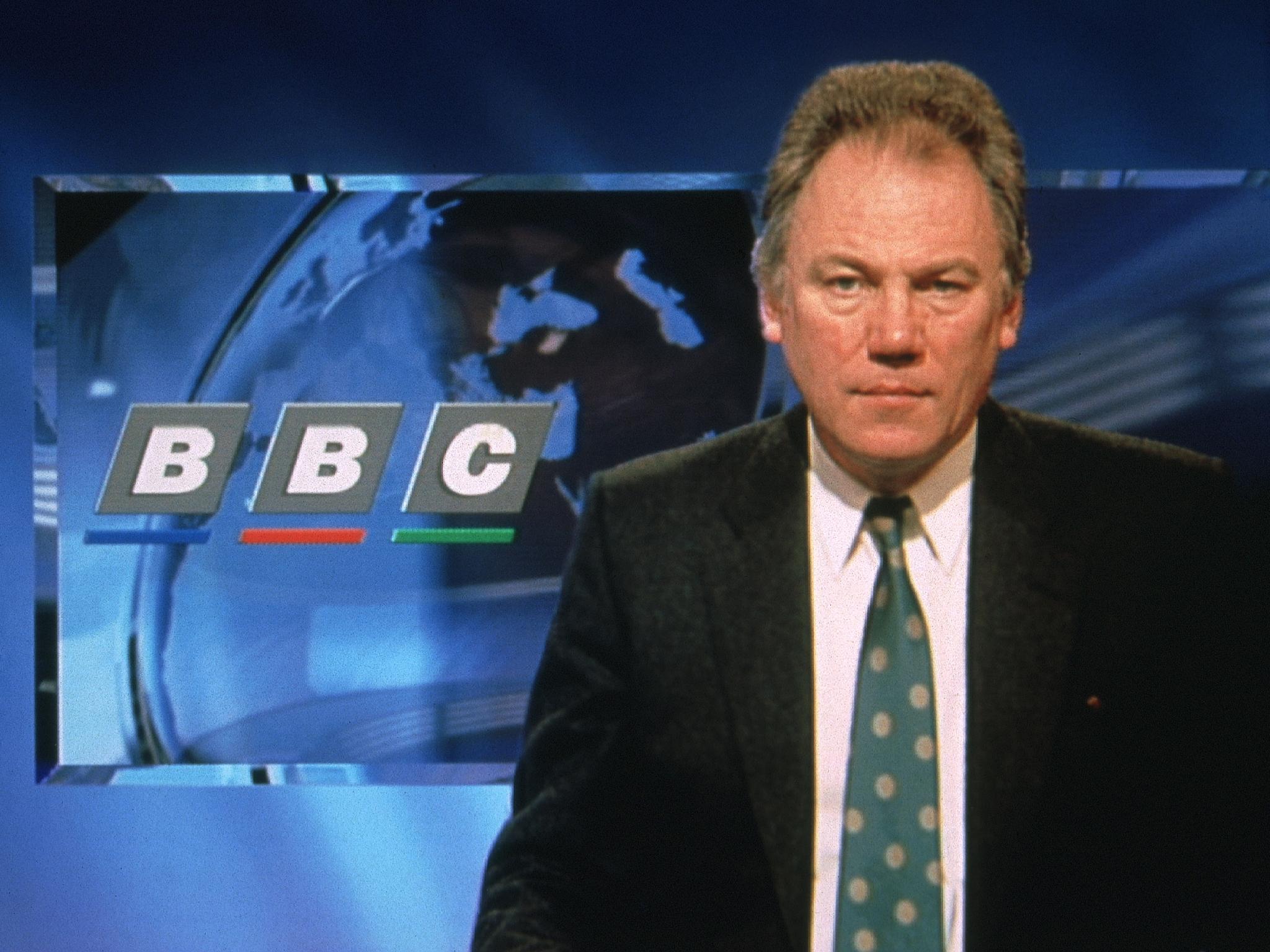Peter Sissons: TV news presenter with unflappable onscreen authority
He was a prominent fixture in broadcasting for decades, and took over from Robin Day as chair of ‘Question Time’

Your support helps us to tell the story
From reproductive rights to climate change to Big Tech, The Independent is on the ground when the story is developing. Whether it's investigating the financials of Elon Musk's pro-Trump PAC or producing our latest documentary, 'The A Word', which shines a light on the American women fighting for reproductive rights, we know how important it is to parse out the facts from the messaging.
At such a critical moment in US history, we need reporters on the ground. Your donation allows us to keep sending journalists to speak to both sides of the story.
The Independent is trusted by Americans across the entire political spectrum. And unlike many other quality news outlets, we choose not to lock Americans out of our reporting and analysis with paywalls. We believe quality journalism should be available to everyone, paid for by those who can afford it.
Your support makes all the difference.Peter Sissons, who has died aged 77, had a screen presence and interviewing skills that made him one of Britain’s longest-serving and most respected television news presenters, on ITV, Channel 4 and the BBC.
He also possessed an authority that came from years as a reporter out in the field. During his early days on ITV News, produced by ITN, he was twice at battlefronts.
In the Middle East in 1967, in the wake of the Six-Day War, he was never in danger, simply encountering sporadic shooting around the Suez Canal and discovering an ammunition train in the middle of the Sinai Desert with corpses lying beside it.
But a year later, while covering the Biafran War, he and a group of journalists and Nigerian soldiers walked into an ambush. In a hail of gunfire, a Time Life photographer fell next to him, shot dead, then Sissons was hit by a bullet that passed through both his legs, leaving four holes. He was the first ITN reporter to be shot.
“I’m very grateful it didn’t take my head off,” he told me later. “You could have put a saucer into the wound in one of my legs and covered the flesh over it. I’m a lot less mobile now.”
Sissons lived to fight another day – but away from war zones. He became a news editor in 1969, industrial correspondent a year later, then industrial editor in 1972 – during a decade when Britain was hit by strikes, war zones of another kind.
In 1978, he took over from Leonard Parkin as newscaster on News at One, which attracted more than 3 million lunchtime viewers. The experience of presenting developing news stories and conducting studio interviews laid the foundations for what was to come next.
Sissons became the main presenter of the newly launched Channel 4’s pioneering, hour-long news-analysis programme, made by ITN, in 1982.
A potpourri of on- and off-screen journalists from both TV and highbrow newspapers failed to gel and it took a revamp before Channel 4 News became a resounding success, held together by the gravitas brought to it by Sissons, who won the Royal Television Society’s Judges’ Award in 1988.
He was lured away the following year by the BBC – which paid ITN £40,000 for breach of his three-year contract – not only to be a newsreader on the Six O’Clock News, but also to take over from Robin Day as chair of Question Time.
The £500,000 salary over three years was attractive, although Sissons was deemed a less than successful successor to Day and his run on Question Time finished at the end of 1993.
Nevertheless, he was promoted to become main presenter of the peak-time Nine O’Clock News on BBC1 in 1994 and continued in the role when the programme switched to 10pm six years later.
He was on air for 10 hours following Princess Diana’s death in 1997, ignoring his bosses’ advice not to ask awkward questions in the interviews he conducted in his usual unflappable style. Five years later, he rode out criticism he received for wearing a burgundy-coloured tie to announce the Queen Mother’s death.
In 2003, in what he described as “ageism”, Sissons was moved to the BBC’s News 24 rolling-news channel, subsequently also seen occasionally on the main channel’s weekend bulletins. He retired in 2009 after a 45-year career in broadcasting.
Peter George Sissons was born in Liverpool in 1942 to Elsie (nee Evans) and George Sissons, a merchant navy officer. John Lennon and Jimmy Tarbuck were among his fellow pupils at Dovedale Junior School, before he studied at Liverpool Institute High School alongside Paul McCartney and George Harrison.
He gained a degree in philosophy, politics and economics from University College Oxford and – after being turned down for a job on the Liverpool Echo – joined ITN in 1964 as a news trainee.
As a subeditor and scriptwriter, Sissons learned quickly. He recalled that a programme editor “went bananas” after he described Westminster Abbey as Westminster Cathedral one Christmas Day. In 1967, he became a general reporter.
His autobiography, When One Door Closes, was published in 2011.
In retirement, Sissons – a lifelong Liverpool football fan – was a member of the Hillsborough Independent Panel, seeing its duty not just to uncover the truth of the football stadium disaster for the sake of the victims’ families, but also for survivors who remained traumatised.
Sissons married Sylvia Bennett in 1965. She survives him, along with their three children.
Peter Sissons, TV news presenter, born, 17 July 1942, died 1 October 2019
Join our commenting forum
Join thought-provoking conversations, follow other Independent readers and see their replies
Comments